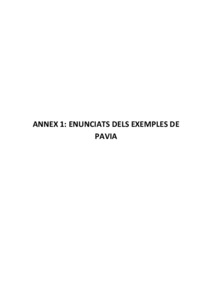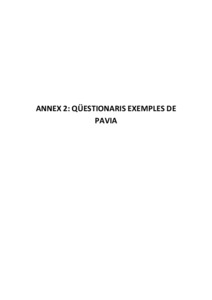Mostra el registre d'ítem simple
Selecció de valors característics a l’Eurocodi EC7
| dc.contributor | Arroyo Alvarez de Toledo, Marcos |
| dc.contributor.author | Gelonch Roca, Laia |
| dc.contributor.other | Universitat Politècnica de Catalunya. Departament d'Enginyeria Civil i Ambiental |
| dc.date.accessioned | 2018-01-26T09:41:27Z |
| dc.date.available | 2018-01-26T09:41:27Z |
| dc.date.issued | 2017-06-14 |
| dc.identifier.uri | http://hdl.handle.net/2117/113241 |
| dc.description.abstract | La resistència geotècnica d’una estructura generalment es calcula a partir de la mitjana de les propietats de sòl. La pràctica espanyola de disseny geotècnic utilitza factors de minoració globals mentre que el juny del 2016 entra en vigor l’Eurocodi que, utilitza factors parcials de minoració. L’Eurocodi defineix el valor característic del sòl com “estimació prudent del valor que afecta l’ocurrència de l’estat límit”. A més, s’estipula que la selecció d’aquest valor s’ha de basar amb, a part d’altres factors, “la extensió de la zona de terreny que governa el comportament de l’estructura geotècnica a l’estat límit que es consideri”. El present treball consta de tres parts diferenciades. La primera, es basa en la presentació de l’Eurocodi i els mètodes de càlcul de fonamentacions superficials i profundes així com, el mètode de selecció del valor característic segons aquesta normativa. La segona, es basa en comparar el càlcul de les estructures geotècniques a partir del Codi Tècnic de la Edificació – utilitza factors de minoració globals – i l’Eurocodi 7 amb l’Annex Nacional Espanyol. La tercera, es presenta un mètode estadístic per determinar el valor característic de les propietats del terreny d’una forma objectiva i vàlida en el món de la geotècnia. Aquest mètode es basa en la mitjana aritmètica, la variància i l’escala de fluctuació. |
| dc.description.abstract | Geotechnical performance of a structure is generally governed by spatial average soil properties. The Spanish typical method to geotechnical design uses global factors to minimize the ground resistance, however on June 2016 comes into force Eurocode 7 that uses partial reduction factors. In Eurocode the characteristic soil value is defined as “a cautious estimate of the value affecting the occurrence of the limit state”. In addition it is stated that the selection of this value should be based on, among other factors, “the extent of the zone of ground governing the behaviour of the geotechnical structure at the limit state being considered”. This thesis is divided in three parts. The first one, is based on the introduction of Eurocode 7 and the design of footings and piles using EC7 and, is shown the characteristic values selection method using this normative. The second one, is based on the geotechnical structure calculus using the Technical Code of the Edification – which uses reduction global factors – and with the Eurocode 7 with the National Spanish Annex. At the third one, a statistical method is presented to assess the characteristic value in an objective way and useful in the geotechnics world’s. This method is based on the arithmetic mean, the variance and the scale of fluctuation. |
| dc.language.iso | cat |
| dc.publisher | Universitat Politècnica de Catalunya |
| dc.rights | Attribution 3.0 Spain |
| dc.rights.uri | http://creativecommons.org/licenses/by/3.0/es/ |
| dc.subject | Àrees temàtiques de la UPC::Enginyeria civil::Geotècnia |
| dc.subject.lcsh | Soil mechanics |
| dc.subject.lcsh | Structural design |
| dc.subject.other | Eurocodi 7 |
| dc.subject.other | Selecció de paràmetres |
| dc.title | Selecció de valors característics a l’Eurocodi EC7 |
| dc.title.alternative | Selección de valores característicos en el Eurocódigo EC7 |
| dc.type | Master thesis |
| dc.subject.lemac | Mecànica dels sòls |
| dc.subject.lemac | Disseny d'estructures |
| dc.identifier.slug | PRISMA-126565 |
| dc.rights.access | Open Access |
| dc.date.updated | 2017-07-19T11:00:52Z |
| dc.audience.educationlevel | Màster |
| dc.audience.mediator | Escola Tècnica Superior d'Enginyers de Camins, Canals i Ports de Barcelona |
| dc.audience.degree | MÀSTER UNIVERSITARI EN ENGINYERIA GEOLÒGICA I DE MINES (Pla 2013) |




